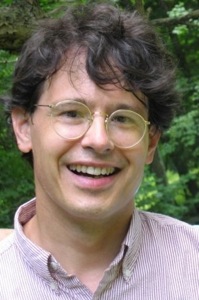James D. Neill began his research career as an undergraduate at the University of Michigan in the Space Physics Research Laboratory where he devloped a visual display system for the Dynamics Explorer-II satellite data. Upon graduation, he began work on support research for the Hubble Space Telescope project at the Space Telescope Science Institute. During his ten years on the project he researched novae and planetary nebulae in nearby galaxies, implemented an optimal extraction algorithm that was adopted by the International Ultraviolet Explorer satellite for their final archive, and helped to calibrate the Faint Object Spectrgraph on the Hubble. He was also appointed as Coordinator of all the research assistants at Space Telescope and maintained the computer systems for the Faint Object Spectrograph Instrument Design Team at Johns Hopkins University.
He moved to New York City and worked as a system manager for the Columbia University Astrophysics Laboratory until he became a full-time graduate student in astrophysics. He received a graduate fellowship from the Americam Museum of Natural History and worked in the newly-formed astrophysics department on population studies of close, interacting binary stars with his thesis advisor, Michael Shara.
Upon graduation, he obtained a postdoctoral research fellowship with the Canada-France-Hawaii Telescope Supernova Legacy Survey at the University of Victoria. Here he determined the rate of Type Ia Supernovae, evaluated sources of systematic errors in the determination of Cosmological parameters using SNe Ia, and assisted with the calibration of the survey data. He then secured a Senior Postdoctoral Scholar position at the California Institute of Technology working on the Galaxy Evolution Explorer (GALEX) satellite. He has used GALEX data to explore the relationship between supernova production and host galaxy properties. He has also studied the stellar wind of Mira and its interaction with the ambient interstellar medium. He also assisted with the devolopment of a program for using the GALEX satellite for time-domain studies of the ultraviolet universe and worked on the spectroscopic calibration for the GALEX grism mode observations.
He then became a Research Scientist at Caltech and leads the software development for the Keck Cosmic Reionization Mapper (KCRM), the red-arm upgrad to the Keck Cosmic Web Imager (KCWI), which was deployed on the Keck Telescope in early 2017. KCWI/KCRM is an imaging spectrograph that uses an image slicer to obtain spectral and spatial imaging of cosmic sources simultaneously. He was also awarded a NASA grant to construct image mosaics of nearby galaxies using Widefield Infrared Survey Explorer (WISE) data, and has used these images to calibrate the Tull-Fisher Relation which connects the rotation rate of a galaxy with its intrinsic brightness.
He was also appointed to be the Commissioning Scientist for the Spectral Energy Distribution Machine (SEDM) and has lead the development of the automated data reduction for this instrument. The SEDM is another imaging spectrograph, but is low resolution and deployed on the robotically-controlled Palomar 60-inch telescope for the Zwicky Transient Facility (ZTF). The SEDM is a key part of the ZTF project, being its front-line classifying engine for transient objects and is currently the leading classifier on the Transient Name Service (TNS) website, being responsible for more than 40% of all supernova classifications on TNS since ZTF started (March 2018). He has obtained two grants from NASA to use the SEDM to obtain early spectra of gammay-ray bursts detected with the SWIFT satellite.
He was also the project manager and principal scientist for the SEDM Kitt Peak instrument, a copy of the original SEDM that is optimized for the Kitt Peak 2.1m telescope. Commissioning has begun after installation at Kitt Peak in July 2022.
He is now the Software Group Lead in the Caltech Optical Observatories (COO) instrument development group and manages a team of five software engineers that work on the software for the HISPEC instrument as well as the DEIMOS Throughput Upgrade, the LRIS2, and ZShooter instruments.

